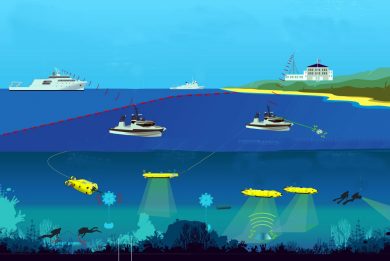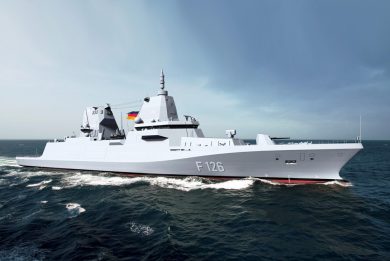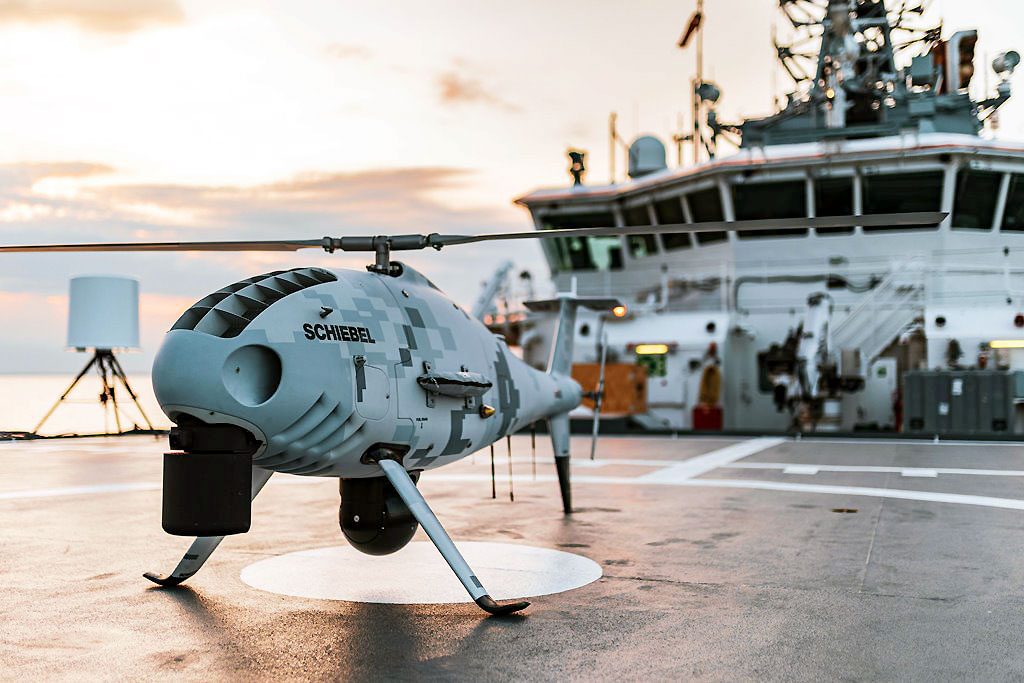
Schiebel: new missions for the S-100 and its bigger brother, the S-300, in development
By Paolo Valpolini
The yearly Schiebel meeting took place on-line with participants linked from all the world. The webinar allowed the company to present its recent successes and operational achievements of its S-100 VTOL UAS, those in the maritime and naval field having been illustrated on EDR On-Line during the virtual Euronaval (click HERE to read). The 200 kg class VTOL UAS is currently in use in all five continents, with 33 customers, the more than 350 air vehicles in operation having flown over 100,000 hours. According to Neil Hunter, Global Head of Business Development, the continuous improvements, together with the 24/7 customer support, have raised reliability and availability over the 95% mark. The S-100 small footprint makes it a perfect solution for small ships, the Schiebel VTOL having operated from more than 30 different naval platforms.
David Peel, Sales Director Asia, went through specifications, highlighting the flexibility of the aircraft thanks to its multiple payload bays, the main one being of course barycentric, with a 50 kg capacity, the nose bay allowing for a 10 kg payload, the same weight that can be carried in the side payload bays and in the auxiliary payload bay, overall maximum payload capacity being 50 kg. He also underlined the 1,000 W on-board power availability, a key factor as many payloads tend to be power-hungry. One highlight was the Manned-Unmanned Teaming capability (MUM-T), which has been demonstrated in cooperation with Airbus, the S-100 having achieved Level of Interoperability 5, which means that it can be fully controlled from the operator in the helicopter, from take-off to landing, receiving all information on board the manned aircraft.
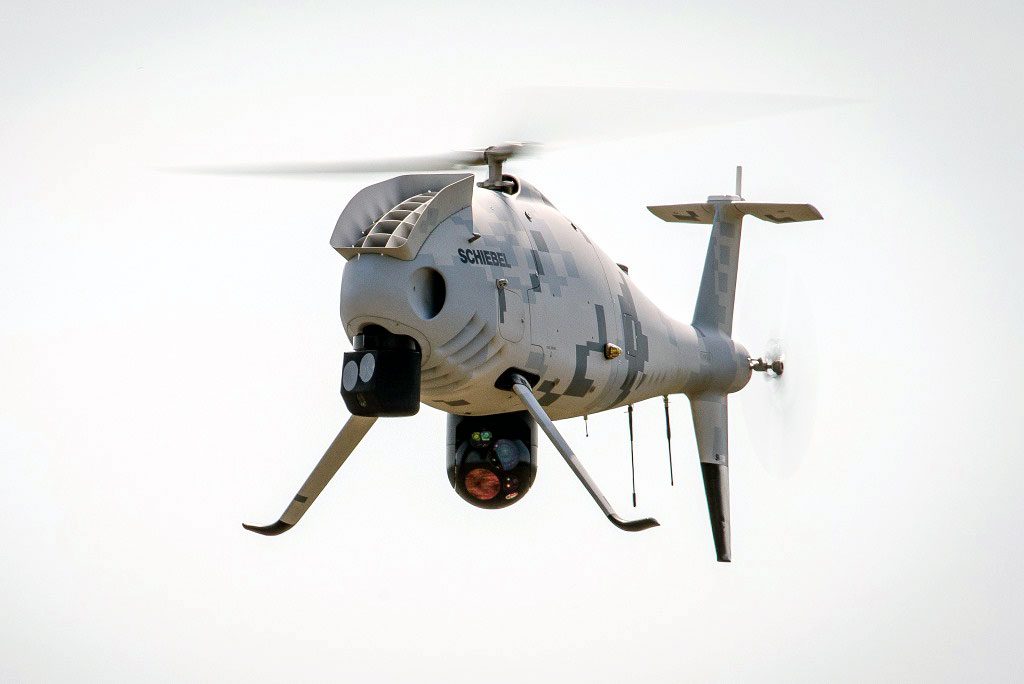
Among the latest addition to the numerous optronic payloads that have been integrated in the S-100, David Peel mentioned two Overwatch products, the TK-5 Earthwatch and the PT-8 Oceanwatch, both providing a wide-area surveillance capacity with long range detection, the PT-8 can acquire a fast boat target at 26 km distance; being lightweight they can be fitted in the nose bay, leaving the main one for the long-range optronic payload. Talking about radars, he mentioned Leonardo’s PicoSAR and Thales I-Master. Both were integrated on the S-100, the latter having required an extended undercarriage and a special tail extension to allow it to land a ship while maintaining a safe space between the sensor and the deck.
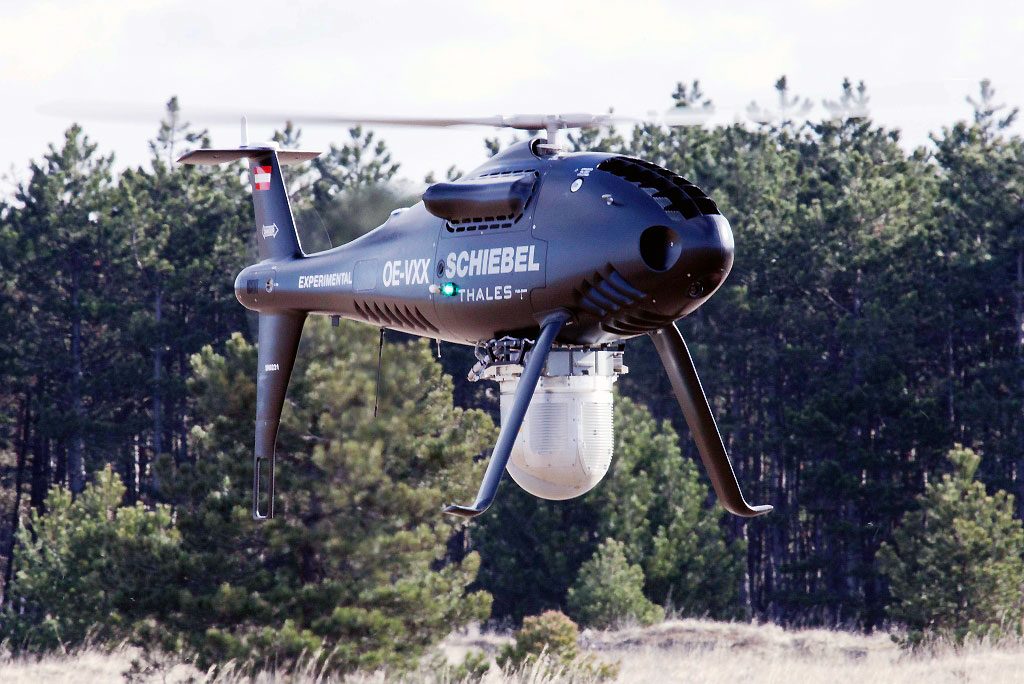
Michael Schiller, the Head of Programmes, illustrated the recent increase in covered space at the company facility in Wiener Neustadt, where Schiebel is now concentrating all the production, which until now was split in two different plants. The facility was established in 2006, and in mid-2020 the production hall has been increased from 2,300 to 7,700 m2, while office space was increased from 1,600 to 2,500 m2. Concentrating production in one location allowed the adoption of a lean manufacturing approach, synchronising all activities from the materiel inspection at one end to the packaging at the opposite end of the production line, Mr. Schiller explained. The increased available space also led to some quantum jumps in capabilities. The composite production, Schiebel is manufacturing in house all composite elements, has now acquired a new autoclave with a 24,000 litres volume, the double of the previous one, allowing to cure many more elements at the same time as well as bigger components. It is to note that Schiebel has produced some elements for car racing teams, including Formula 1. The other new installation is that of a titanium 3D printer; the additive manufacturing centre was created in early 2020 and has now reached its full capability starting serial production. The responsible of this high-tech production system showed some landing gear brackets explaining that their weight is less than half that of original components, while being much stronger, thanks to the adoption of bionics structure optimisation. “We are developing several different components in order to offer the advantages given by our new high-tech facility to our customers,” he added. In perspective this would reduce the dry weight of the aircraft, the fight against the gravity force being typical of all flying objects designers.
Another innovation, which is being introduced, is the web-based interface with the customer, which offer includes today four elements, customer support, technical support, quality support and inquiries. Customers can benefit of this new approach that gives a number of advantages, and in perspective the knowledge base availability will allow to put questions to the system, which will answer if that question and the relative answer(s) had already been added to the data base, and if not it will be taken into account to update the knowledge base itself. Reducing support time and extending it to a wider base will be beneficial for further increasing availability and maintainability.
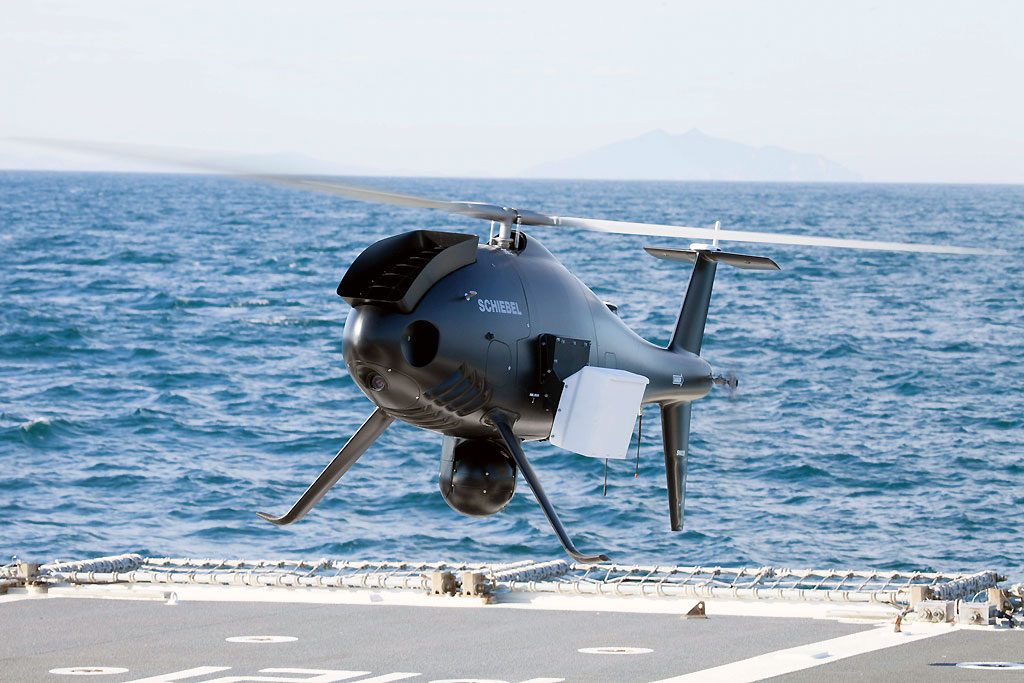
Back to Neil Hunter, the Global Head of Business Development talked about new developments and future plans. He underlined the increase in the potential maritime market. Showing the company statistics, 87 countries are deploying 839 Offshore Patrol Vessels (OPVs), 36 countries have overall 167 OPVs on order, and 28 countries are planning to order further 239 ships of that category. Due to its very small footprint, the S-100 VTOL UAS is proposed to increase their operational effectiveness. On the other hand the number of submarines is also increasing, 41 countries operating some 450 submarines, 154 having been procured in the 2011-2021 timeframe. Mr. Hunter is certainly not looking at embarking the S-100 on a submarine, but rather at using it to complement current ASW assets. “Two or three large primes are looking at how we can adapt the S-100 to deliver an ASW capability, which can be done in two ways; fitting side payloads and dropping sonobuoys, or replacing the main sensor in the belly and fitting a cable with an active sonar, which can be detachable and expendable. Even with its reduced dimensions the S-100 can deliver an ASW capability,” Mr. Hunter explains. Furthermore, a Magnetic Anomaly Detector has already been tested in the United States on an S-100, giving an enhanced capability in the ASW area.
Schiebel is very much proposing its S-100 as a multi-role, multi-domain capability. Many entities are looking for a LADAR (LAser Detection And Ranging) sensor, a useful tool both on land an at sea, especially in shallow waters. “We recently won a contract in the United States,” Hunter said, “to see how we can deliver an effective LADAR capability on the S-100.” Extending the range through satellite communications (SATCOM) is a further issue that is acquiring importance. “The S-100 rotorhead is made of titanium, and that piece is not only strong but also hollow, so we always had the ability to put a capability on top of the rotorhead and pass all the electronics down through the rotorhead into the system itself,” he explained, adding that Schiebel has a contract with a large European company to investigate how the S-100 can be turned into a SATCOM capability. “In the early stages we will look only at command and control, but in the longer term we will consider integrating data information through the SATCOM.”
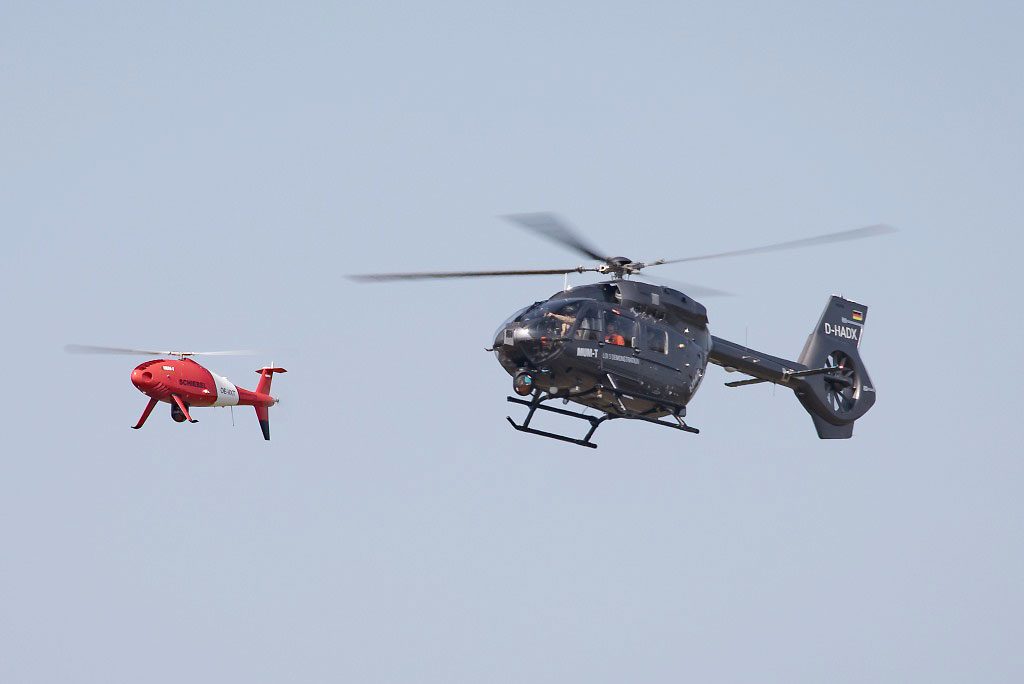
He then stresses the aforementioned MUM-T capability, tested in team with an Airbus H145 helicopter, which allows to deploy the unmanned aircraft ahead of the manned one, in high risk areas or to complement the manned helicopter search. Mr. Hunter strongly believes that this capability will be more and more required, both in the civilian and in the military domains. Another growing market is that of communications relay, as well as the resupply one, the latter recently put to test in northern Europe.
What is still unknown is when it will fly, but what is certain is that Schiebel will give a big brother to its S-100, the company Schiebel states that 80% of its effort remains currently on the available product. That said, the company understands that there is a requirement for a larger UAS helicopter, hence the S-300 programme, this will be the name of the new UAS which configuration is not yet frozen. “Figures are yet to be completely finalised but we estimate it will come up at 600-750 kg Maximum Take-Off Weight, which will give a maximum payload capacity of around 250 kg,” Neil Hunter states. Depending on the split between fuel and operational payload, maximum endurance should reach 20 hours with a light payload. “We have a rotorhead, we have a gear box and we have gears in place, so the transmission is now all connected and is ready to be tested,” Hunter added. With the iron bird now fully assembled, Schiebel will soon start the first trials, including transmission performance and loads and vibration assessment. Later on the company will work on the reliability modelling, and then on integrated logistic support and maintenance requirements. Anticipating the obvious question, Mr. Hunter said that numerous technical milestones have to be overcome before being able to announce when the S-300 will hit the market. That said, the S-300 leverages on lessons learned from the S-100 in terms of hardware, software and control station, and the latter might become a common GCS in the future.
Aforementioned developments are possible because Schiebel reinvests in R&D around 30% of its annual revenues. Looking at the future in market terms, different sources provide different numbers but certainly all of them show a steady increase in the need of UAS VTOL systems, thus Schiebel is preparing itself in terms of production capability, product enhancements and new products developments.
All photos courtesy Schiebel


